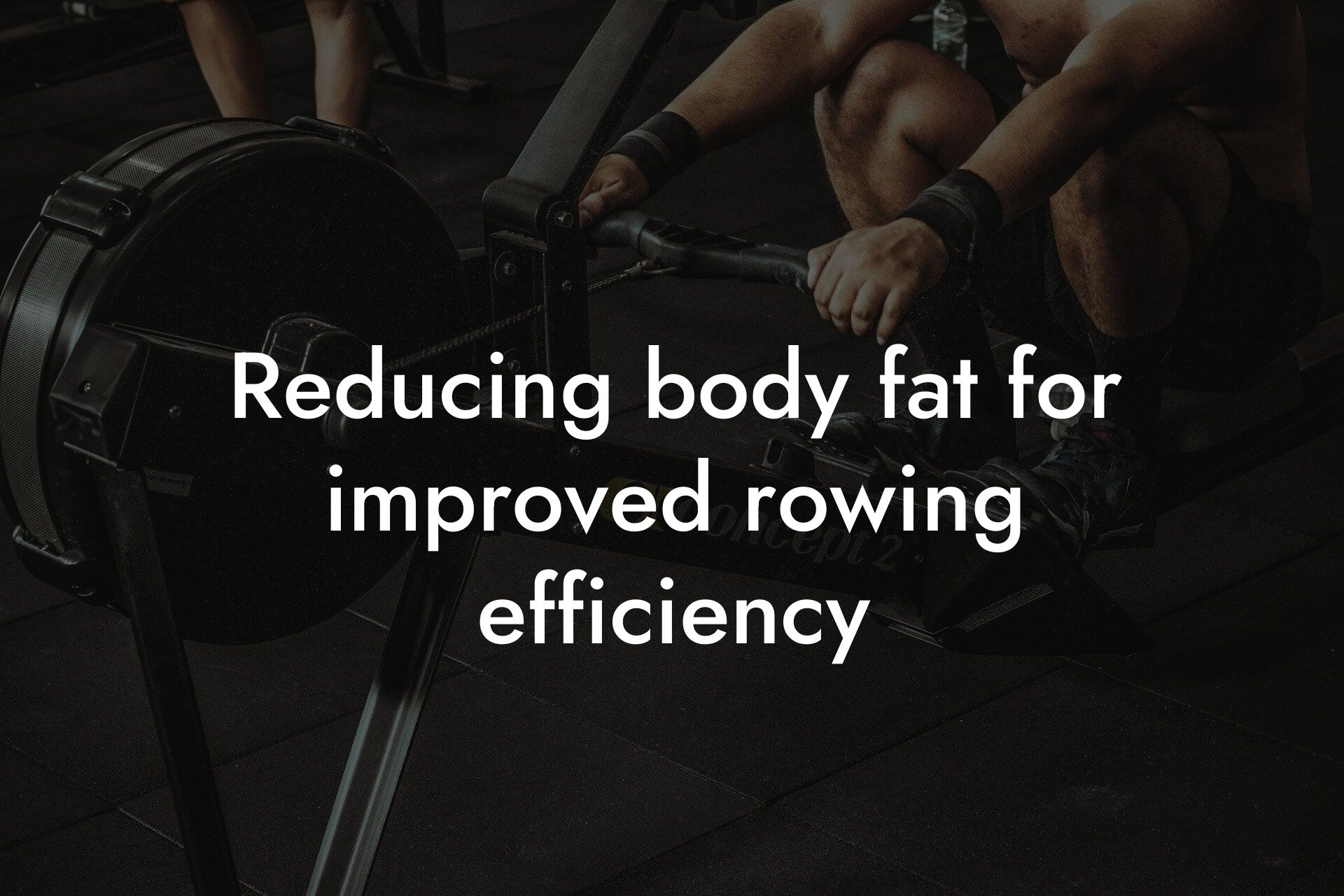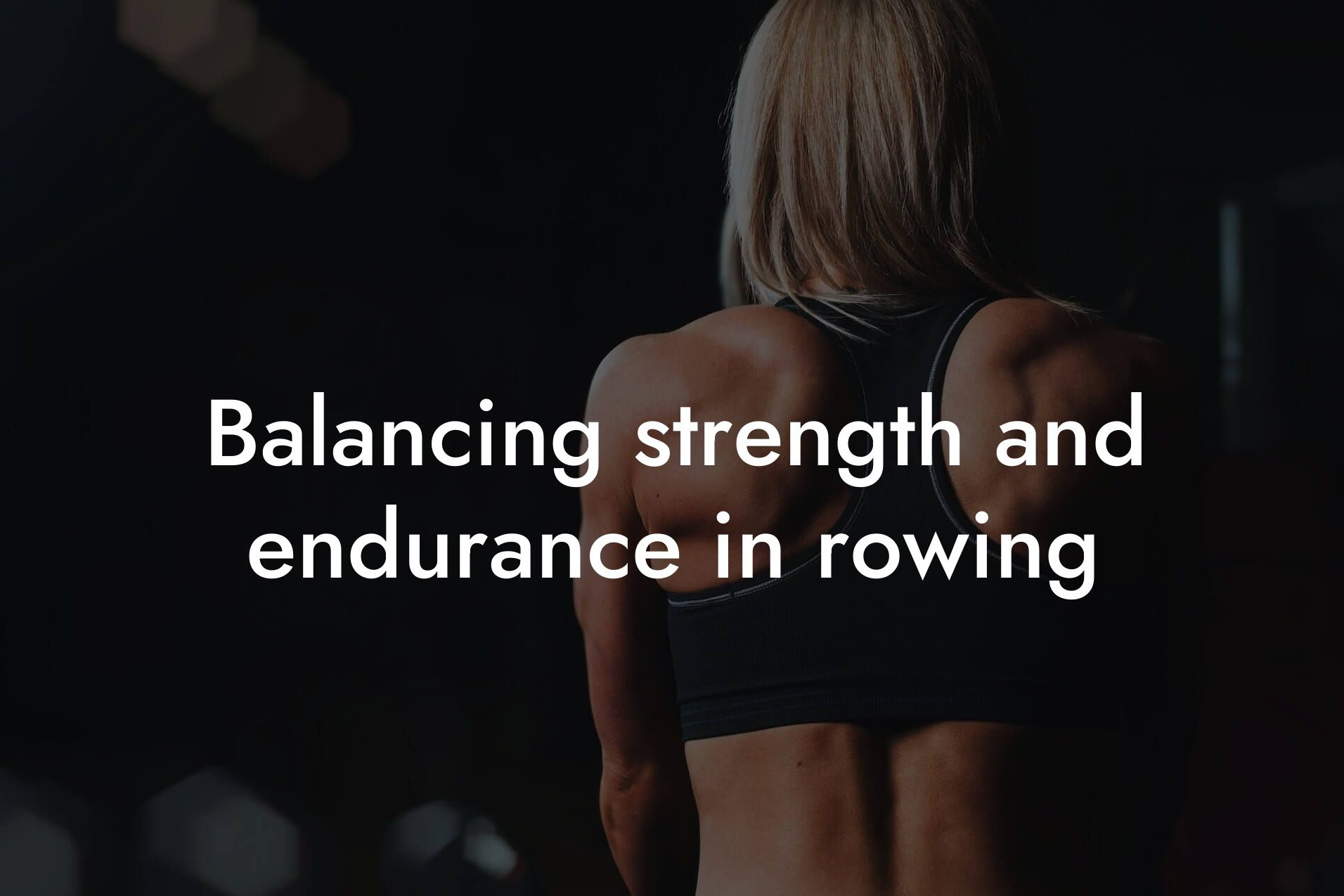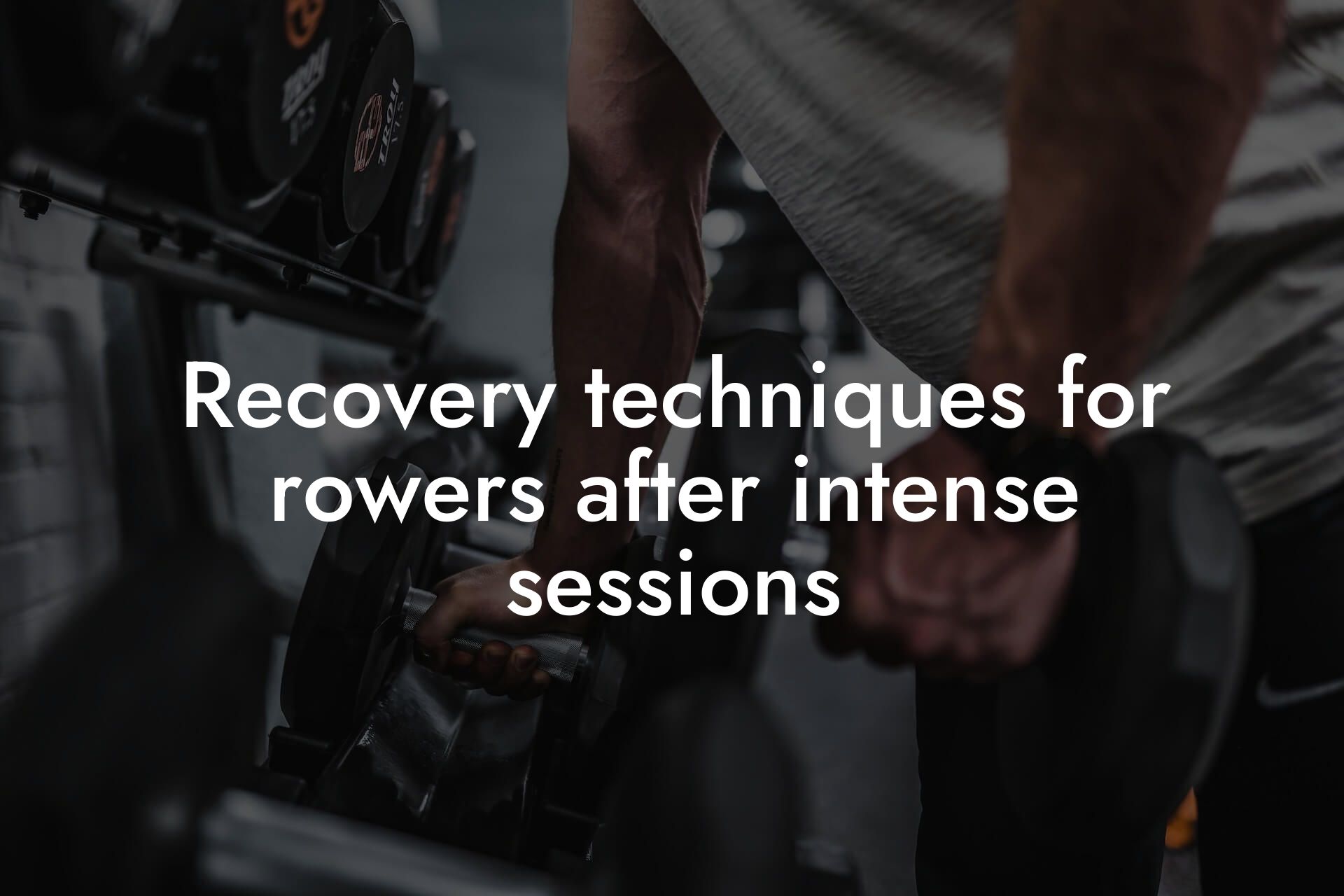As a high-earning professional, you understand the importance of maintaining a healthy and fit physique. Rowing is an excellent way to improve your overall fitness, but it requires a specific approach to maintain muscle tone and endurance. In this article, we will provide you with a comprehensive guide on how to optimize your rowing performance and achieve your fitness goals.
Table of Contents
- Understanding the Importance of Muscle Tone and Endurance in Rowing
- The Key Muscle Groups Involved in Rowing
- Training for Muscle Tone and Endurance in Rowing
- Incorporating High-Intensity Interval Training (HIIT) into Your Rowing Program
- The Importance of Proper Nutrition and Hydration for Rowing Performance
- The Role of Rest and Recovery in Maintaining Muscle Tone and Endurance
- Monitoring Your Progress and Adjusting Your Training Program
- Frequently Asked Questions
Understanding the Importance of Muscle Tone and Endurance in Rowing
Muscle tone and endurance are crucial components of rowing performance. Muscle tone refers to the ability of your muscles to contract and relax efficiently, while endurance refers to your body's ability to sustain activity over a prolonged period. In rowing, you need to maintain a strong and efficient stroke, which requires a combination of power, speed, and endurance. Good muscle tone and endurance enable you to row at a higher intensity, maintain a consistent pace, and reduce your risk of injury.
The Key Muscle Groups Involved in Rowing
Rowing is a full-body exercise that engages multiple muscle groups. The primary muscle groups involved in rowing are:
- Latissimus dorsi (back muscles): responsible for the pulling motion
- Rhomboids and trapezius (upper back muscles): help to stabilize the scapula and facilitate the pulling motion
- Deltoids (shoulder muscles): assist in the pulling motion and help to maintain proper posture
- Biceps and brachialis (arm muscles): responsible for the pulling motion and forearm rotation
- Core muscles (abdominal and obliques): provide stability and help to transfer power from the legs to the upper body
- Legs (quadriceps, hamstrings, and glutes): provide power and drive the movement
Training for Muscle Tone and Endurance in Rowing
To improve muscle tone and endurance in rowing, you need to incorporate a combination of strength training, endurance exercises, and technique drills into your training program. Here are some exercises and tips to help you achieve your goals:
- Strength training: focus on exercises that target the key muscle groups involved in rowing, such as lat pulldowns, rows, shoulder presses, bicep curls, and leg presses. Aim to do 3-4 sets of 8-12 reps for each exercise.
- Endurance exercises: incorporate cardio exercises such as running, cycling, or swimming to improve your cardiovascular endurance. Aim to do 20-30 minutes of moderate-intensity cardio exercise 2-3 times a week.
- Technique drills: practice rowing drills such as the "catch" drill, where you focus on the initial catch of the oar, and the "finish" drill, where you focus on the final push of the oar. These drills will help you improve your technique and increase your efficiency.
Incorporating High-Intensity Interval Training (HIIT) into Your Rowing Program
HIIT is a highly effective way to improve muscle tone and endurance in rowing. HIIT involves short bursts of high-intensity exercise followed by brief periods of rest. This type of training helps to improve your anaerobic endurance, increase your power output, and enhance your overall rowing performance. Here's an example of a HIIT workout for rowing:
- Warm-up: 5-10 minutes of light rowing
- Sprint intervals: 20-30 seconds of maximum-intensity rowing followed by 1-2 minutes of rest. Repeat for 15-20 minutes.
- Cool-down: 5-10 minutes of light rowing
The Importance of Proper Nutrition and Hydration for Rowing Performance
Proper nutrition and hydration are essential for optimal rowing performance. A well-balanced diet that includes a mix of complex carbohydrates, lean protein, and healthy fats will help to fuel your body and support muscle growth and repair. Additionally, staying hydrated by drinking plenty of water will help to prevent dehydration and maintain your energy levels.
- Focus on complex carbohydrates such as whole grains, fruits, and vegetables
- Include lean protein sources such as chicken, fish, and tofu
- Healthy fats such as nuts, seeds, and avocados are essential for energy production
- Drink at least 8-10 glasses of water per day
The Role of Rest and Recovery in Maintaining Muscle Tone and Endurance
Rest and recovery are critical components of any training program. Adequate rest and recovery allow your muscles to repair and rebuild, which is essential for maintaining muscle tone and endurance. Here are some tips to help you optimize your rest and recovery:
- Get at least 7-9 hours of sleep per night
- Take rest days as needed, ideally 1-2 days per week
- Incorporate stretching and foam rolling into your routine to help reduce muscle soreness and improve recovery
- Use compression garments and ice baths to aid in recovery
Monitoring Your Progress and Adjusting Your Training Program
Monitoring your progress and adjusting your training program are essential for maintaining muscle tone and endurance in rowing. Here are some ways to track your progress:
- Use a DEXA machine to track your body composition and bone density
- Monitor your rowing performance using metrics such as speed, distance, and power output
- Keep a training log to track your workouts, including exercises, sets, reps, and weight
- Adjust your training program based on your progress, incorporating new exercises, increasing intensity, or changing your training frequency
Maintaining muscle tone and endurance in rowing requires a comprehensive approach that includes strength training, endurance exercises, technique drills, HIIT, proper nutrition and hydration, rest and recovery, and monitoring your progress. By incorporating these elements into your training program, you can optimize your rowing performance, achieve your fitness goals, and maintain a healthy and fit physique. Remember to stay consistent, patient, and committed to your training program, and you will see significant improvements in your muscle tone and endurance.
Frequently Asked Questions
What is muscle tone and endurance in rowing?
Muscle tone and endurance in rowing refer to the ability of the muscles to sustain contractions over a prolonged period, allowing rowers to maintain a consistent pace and efficient technique throughout their workout or competition. Having good muscle tone and endurance enables rowers to generate more power, speed, and efficiency, ultimately leading to improved performance.
Why is maintaining muscle tone and endurance important for rowers?
Maintaining muscle tone and endurance is crucial for rowers as it directly impacts their performance, injury prevention, and overall physical fitness. Stronger muscles and improved endurance enable rowers to tackle challenging workouts, recover faster, and reduce their risk of injury.
What are the key muscles used in rowing?
The primary muscles used in rowing include the latissimus dorsi, rhomboids, trapezius, biceps, brachialis, and quadriceps. Additionally, the core muscles, including the abdominals and obliques, play a vital role in stabilizing the body and generating power.
How can I improve my muscle tone in rowing?
To improve muscle tone in rowing, focus on exercises that target the specific muscle groups used in the sport. This includes lat pulldowns, rows, shoulder presses, bicep curls, and leg presses. Incorporate a mix of strength training and endurance exercises to build both power and stamina.
What is the best way to build endurance in rowing?
To build endurance in rowing, incorporate high-intensity interval training (HIIT) into your workout routine. This involves alternating between periods of high-intensity rowing and active recovery. Additionally, focus on building your cardiovascular fitness through cardio exercises such as running, cycling, or swimming.
How often should I train to maintain muscle tone and endurance in rowing?
Aim to train at least 3-4 times per week, with a mix of strength training, endurance exercises, and active recovery. It's essential to allow for rest days to enable your muscles to recover and rebuild.
What is the role of nutrition in maintaining muscle tone and endurance in rowing?
Nutrition plays a critical role in maintaining muscle tone and endurance in rowing. Focus on consuming a balanced diet rich in protein, complex carbohydrates, and healthy fats. Adequate hydration is also essential to support muscle function and recovery.
How can I incorporate strength training into my rowing routine?
Incorporate strength training exercises 2-3 times per week, focusing on exercises that target the specific muscle groups used in rowing. Start with lower weights and higher reps to build endurance, and gradually increase the weight as you build strength.
What are some common mistakes rowers make when trying to build muscle tone and endurance?
Common mistakes rowers make include neglecting to incorporate strength training, failing to allow for adequate rest and recovery, and ignoring proper nutrition and hydration. Additionally, poor technique and inadequate warm-up and cool-down routines can also hinder progress.
How can I prevent injury while building muscle tone and endurance in rowing?
To prevent injury, focus on proper technique, warm-up and cool-down routines, and incorporate exercises that target the smaller stabilizer muscles. Additionally, listen to your body and take regular rest days to allow for recovery.
What is the importance of core strength in rowing?
Core strength is essential in rowing as it provides stability and support for the entire body. A strong core enables rowers to generate more power, maintain good posture, and reduce their risk of injury.
How can I improve my core strength for rowing?
To improve core strength for rowing, incorporate exercises such as planks, Russian twists, and leg raises into your workout routine. Additionally, focus on engaging your core during strength training exercises and while rowing.
What is the role of flexibility and mobility in maintaining muscle tone and endurance in rowing?
Flexibility and mobility are crucial in rowing as they enable rowers to maintain good technique and generate power efficiently. Incorporate stretching and mobility exercises into your routine to improve flexibility and range of motion.
How can I improve my flexibility and mobility for rowing?
To improve flexibility and mobility for rowing, incorporate exercises such as leg swings, arm circles, and torso twists into your warm-up and cool-down routines. Additionally, focus on stretching the major muscle groups used in rowing.
What is the importance of mental preparation in maintaining muscle tone and endurance in rowing?
Mental preparation is essential in rowing as it enables rowers to push through challenging workouts, overcome fatigue, and stay focused during competition. Incorporate mental training techniques such as visualization, positive self-talk, and breathing exercises into your routine.
How can I incorporate mental preparation into my rowing routine?
To incorporate mental preparation into your rowing routine, set specific goals, visualize yourself achieving those goals, and focus on positive self-talk during workouts. Additionally, practice breathing exercises and meditation to improve mental toughness.
What are some common myths about building muscle tone and endurance in rowing?
Common myths about building muscle tone and endurance in rowing include the idea that rowing alone is enough to build strength and endurance, and that strength training will make you slower. However, incorporating strength training and other forms of exercise can actually improve your overall performance.
How can I track my progress in building muscle tone and endurance in rowing?
To track your progress, set specific, measurable goals, and monitor your performance through metrics such as split times, heart rate, and power output. Additionally, take progress photos and track your body fat percentage to monitor changes in your physique.
What is the role of recovery in maintaining muscle tone and endurance in rowing?
Recovery is critical in rowing as it enables your muscles to rebuild and adapt to the demands of the sport. Incorporate active recovery techniques such as foam rolling, stretching, and self-myofascial release into your routine to aid in recovery.
How can I incorporate active recovery into my rowing routine?
To incorporate active recovery into your rowing routine, set aside time for stretching, foam rolling, and self-myofascial release after workouts. Additionally, prioritize rest days and incorporate low-intensity cardio exercises such as yoga or cycling to aid in recovery.
What are some common mistakes rowers make when it comes to recovery?
Common mistakes rowers make when it comes to recovery include neglecting to prioritize rest days, failing to incorporate active recovery techniques, and ignoring proper nutrition and hydration. Additionally, rowers may neglect to listen to their bodies and push through fatigue, leading to injury or burnout.
How can I maintain muscle tone and endurance in rowing during the off-season?
To maintain muscle tone and endurance in rowing during the off-season, focus on strength training, cardio exercises, and active recovery. Additionally, prioritize proper nutrition and hydration, and set specific goals to stay motivated and focused.
What are some tips for rowers who are just starting out?
For rowers who are just starting out, focus on building a strong foundation through proper technique, strength training, and cardio exercises. Additionally, prioritize proper nutrition and hydration, and set specific, achievable goals to stay motivated and focused.
How can I stay motivated and focused while building muscle tone and endurance in rowing?
To stay motivated and focused, set specific, measurable goals, and track your progress through metrics such as split times, heart rate, and power output. Additionally, find a workout buddy or join a rowing community to stay accountable and motivated.
Here are some related articles you might love...
- Reducing body fat for improved rowing efficiency
- Balancing strength and endurance in rowing
- Recovery techniques for rowers after intense sessions
- How body composition impacts rowing performance
- The role of rowing in cardiovascular health
- Strength training tips to complement your rowing routine
- Using DEXA scans to monitor progress in rowing
- Bone density and its role in rowing performance
- Nutrition strategies for sustained energy during rowing workouts
Zak Faulkner
Zak Faulkner is a leading authority in the realm of physical health and body composition analysis, with over 15 years of experience helping professionals optimise their fitness and well-being. As one the experts behind Tano Performance Group, Zak has dedicated his career to providing in-depth, science-backed insights that empower clients to elevate their physical performance and overall health.
With extensive knowledge of DEXA technology, Zak specializes in delivering comprehensive body assessments that offer precise data on body fat, muscle mass, bone density, and overall physique. His expertise enables individuals to make informed decisions and achieve their fitness goals with accuracy and confidence. Zak’s approach is rooted in a deep understanding of human physiology, combined with a passion for helping clients unlock their full potential through personalised strategies.
Over the years, Zak has earned a reputation for his commitment to excellence, precision, and client-focused service. His guidance is trusted by top professionals who demand the best when it comes to their health. Whether advising on fitness programs, nutritional strategies, or long-term wellness plans, Zak Faulkner’s insights are a valuable resource for anyone serious about taking their health and fitness to the next level.
At Tano Performance Group, Zak continues to lead our Content Team revolutionising how professionals approach their physical health, offering unparalleled expertise that drives real results.




